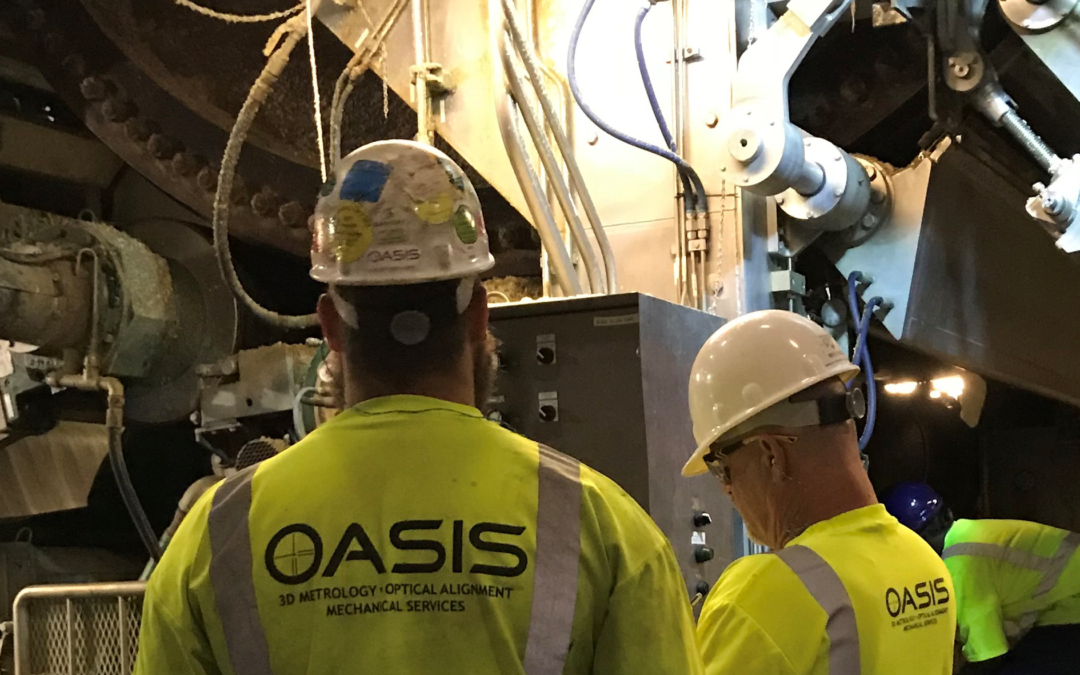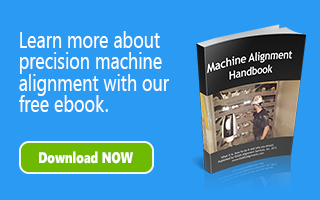We recently published Part One and Part Two of our series on The Importance of Precision Machine Alignment During Paper Machine Upgrades and Conversions. Here in the third and final post of this series, we discuss the common process and production issues you can encounter when paper machine components are misaligned. Additionally, we provide an overview of the alignment techniques and methodologies that can help you avoid these costly issues.
Process and Production Issues
Misalignment can lead to a host of process and production issues. The process of manufacturing a specific type and quality of sheet is dependent on the overall condition of the machine. If the machine is not properly aligned, the overall process will suffer. When implementing upgrades to machine sections it is vital to know alignment conditions leading into and out of the new section to be installed. Proper transitions should be established to allow for optimal performance of the new piece of equipment in tandem with existing equipment.
Production of the sheet is also constrained by the condition of the machine. Misalignment of machine components will lead to poor sheet quality, defects in the sheet, wrinkles & sheet breaks; all which lead to scrap or lost production. If alignment is overlooked during a rebuild effort, costs can increase with very little return on investment simply because the production process was not synchronized by properly aligning new equipment in correlation with existing equipment.
A comprehensive alignment plan can keep the process and expected levels of production at peak levels. It may even allow you to break previously held production levels. And, wouldn’t you all want to be the champion of that achievement?
Alignment Techniques
There are various techniques for alignment but many are out dated and few people know how to utilize those older techniques. The preferred techniques utilize optical alignment tooling and/or laser-based equipment, such as the laser tracker. Highly accurate optical tooling and laser trackers can measure to 0.001” and easily provide the precision measurement standards and tolerances required by manufacturers.
Optical tooling and laser trackers use established reference points and allow for measurements to be obtained on all locations of equipment in both vertical and horizontal location and alignment positioning. In general, machine components are measured end-to-end to determine relative alignment conditions and corrections are made at mounting surfaces for precision alignment.
Proper use of precision measurement instruments will yield optimal alignment results. The measurement instrument though, is only as good as its operator. When properly trained, alignment engineers and field service technicians can obtain and document precision alignment data that validates the alignment of new and existing equipment.
Alignment Methodologies
It is important to understand the overall paper making process – continuous web from forming section to reel – in order to establish a paper machine alignment methodology that ensures precision alignment throughout the entire machine.
In general, all machine components should be aligned level to earth and perpendicular to machine centerline. For an entirely new machine installation this may seem fairly straight forward. Layout a straight line in the floor and set all equipment on centerline, level and square to that centerline. However, when existing equipment is in operation and inspection and alignment of components is to take place, it is vital that proper methodologies are followed.
An overall machine centerline survey should be performed and monuments installed in the operating aisle floor. These monuments will serve as an offset representation of the machine centerline. Then optical tooling or laser trackers can be utilized from wet end to dry end for documentation of equipment alignment conditions.
Transitions should be established when aligning only one section of a machine at a time or during a rebuild effort. Proper transitions will allow for continuous sheet transition from one section to the next thereby avoiding sheet breaks.
Using proper alignment methods will ensure upgrades/rebuilds to existing equipment yield optimum benefits.
If your mill is considering a paper machine upgrade or conversion, the time is now to bring in the experts in precision machine alignment. Please contact the OASIS Service Center nearest you today – an OASIS representative would be happy to assist you. And, be sure to join our email list for regular updates on precision measurement, machine alignment, and mechanical services.


Awesome article written by a awesome guy. Alignment is critical in all machines